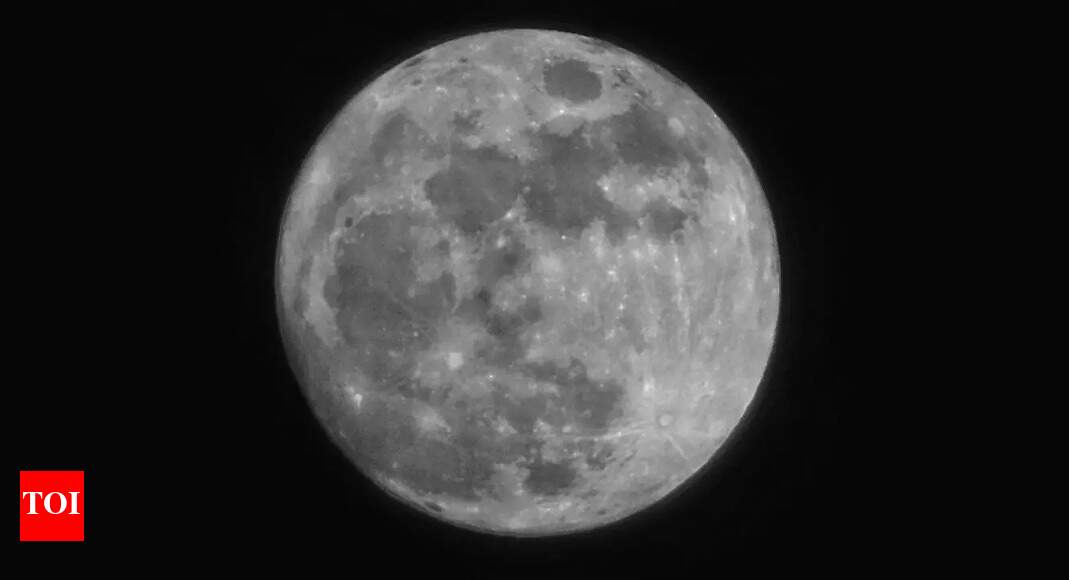NASA to build nuclear reactor on Moon by 2030: What is behind the ambitious plan? | – The Times of India

NASA has unveiled plans to build a nuclear reactor on the Moon by 2030 as part of its Artemis program, which aims to return humans to the lunar surface and establish a sustainable presence. This ambitious move comes amid increasing international competition in space exploration, with countries like China and Russia developing similar nuclear-powered lunar projects. The reactor is designed to provide a continuous, reliable source of energy to power habitats, scientific instruments, rovers, and mining operations, especially during the Moon’s lengthy nights and permanently shadowed craters where solar power is ineffective.The development of this nuclear power system marks a crucial step toward creating the infrastructure necessary for long-term lunar habitation and resource utilization. Unlike previous missions that relied heavily on solar panels and limited battery storage, a nuclear reactor could enable round-the-clock operations and pave the way for deeper space exploration, including future missions to Mars.
Why NASA wants to build a nuclear reactor on the Moon
NASA has been quietly developing small nuclear power systems in collaboration with the Department of Energy for years. The plan is to deploy a small modular nuclear reactor capable of producing at least 100 kilowatts of electricity, enough to power about 80 homes on Earth. This reactor will provide continuous energy without interruption, a critical advantage over solar power, which falters during the Moon’s two-week-long nights.The Moon’s south pole is a particular focus due to its abundant water ice deposits, essential for life support and fuel production. However, these craters are permanently shadowed, receiving little to no sunlight, rendering solar energy impractical. The nuclear reactor will enable operations in these challenging environments, supporting scientific research, mining activities, and habitat life-support systems.NASA’s Acting Administrator Sean Duffy has emphasized the importance of this technology for Artemis’ goals, calling it a “game changer” for sustained lunar presence. The project is also seen as a testbed for technologies that could eventually support human missions to Mars, where solar energy is even less reliable.
Geopolitical stakes and the race for lunar infrastructure
The push for a nuclear reactor on the Moon comes at a time of heightened geopolitical competition in space. China announced plans in 2025 to build a nuclear power plant on the Moon by 2035, while Russia has also expressed ambitions in this domain. Establishing nuclear infrastructure is more than a technical achievement; it signals a country’s ability to exert influence and control over critical lunar regions.Under the 1967 Outer Space Treaty, no nation can claim sovereignty over the Moon or other celestial bodies. However, building infrastructure such as nuclear reactors and bases effectively sets “keep-out zones” around these installations. These zones grant operators significant control over access to nearby resources, like the valuable ice deposits at the lunar south pole, which could be used to produce rocket fuel and sustain life.Experts view NASA’s project as a strategic move to maintain U.S. leadership in space exploration and to shape international norms for the responsible and peaceful use of nuclear power beyond Earth. Transparency, adherence to international guidelines, and cooperation will be essential to prevent conflict and ensure that space remains a domain for peaceful exploration.
Why nuclear power is essential for the future of space exploration
Solar panels have powered numerous space missions successfully, but their limitations are becoming increasingly apparent as humans prepare for long-term habitation beyond Earth. The Moon’s long nights and shadowed craters present significant challenges for solar energy, while Mars’ greater distance from the Sun further reduces its effectiveness.A nuclear reactor on the Moon can provide a stable, high-density power source capable of supporting demanding applications such as 3D printing of habitats, life support systems, communication networks, and scientific experiments. It also reduces reliance on expensive and logistically complex resupply missions from Earth.While concerns about safety and radiation risks exist, NASA and international space agencies adhere to strict safety protocols. The use of radioisotope thermoelectric generators (RTGs) in past missions, such as the Voyager probes and Mars rovers, has demonstrated the feasibility and safety of nuclear power in space. The planned lunar reactor would be designed with containment and fail-safe measures to minimize risks.
var _mfq = window._mfq || [];
_mfq.push([“setVariable”, “toi_titan”, window.location.href]);
!(function(f, b, e, v, n, t, s) {
function loadFBEvents(isFBCampaignActive) {
if (!isFBCampaignActive) {
return;
}
(function(f, b, e, v, n, t, s) {
if (f.fbq) return;
n = f.fbq = function() {
n.callMethod ? n.callMethod(…arguments) : n.queue.push(arguments);
};
if (!f._fbq) f._fbq = n;
n.push = n;
n.loaded = !0;
n.version = ‘2.0’;
n.queue = [];
t = b.createElement(e);
t.async = !0;
t.defer = !0;
t.src = v;
s = b.getElementsByTagName(e)[0];
s.parentNode.insertBefore(t, s);
})(f, b, e, ‘https://connect.facebook.net/en_US/fbevents.js’, n, t, s);
fbq(‘init’, ‘593671331875494’);
fbq(‘track’, ‘PageView’);
};
function loadGtagEvents(isGoogleCampaignActive) {
if (!isGoogleCampaignActive) {
return;
}
var id = document.getElementById(‘toi-plus-google-campaign’);
if (id) {
return;
}
(function(f, b, e, v, n, t, s) {
t = b.createElement(e);
t.async = !0;
t.defer = !0;
t.src = v;
t.id = ‘toi-plus-google-campaign’;
s = b.getElementsByTagName(e)[0];
s.parentNode.insertBefore(t, s);
})(f, b, e, ‘https://www.googletagmanager.com/gtag/js?id=AW-877820074’, n, t, s);
};
function loadSurvicateJs(allowedSurvicateSections = []){
const section = window.location.pathname.split(‘/’)[1]
const isHomePageAllowed = window.location.pathname === ‘/’ && allowedSurvicateSections.includes(‘homepage’)
const ifAllowedOnAllPages = allowedSurvicateSections && allowedSurvicateSections.includes(‘all’);
if(allowedSurvicateSections.includes(section) || isHomePageAllowed || ifAllowedOnAllPages){
(function(w) {
function setAttributes() {
var prime_user_status = window.isPrime ? ‘paid’ : ‘free’ ;
var geoLocation = window?.geoinfo?.CountryCode ? window?.geoinfo?.CountryCode : ‘IN’ ;
w._sva.setVisitorTraits({
toi_user_subscription_status : prime_user_status,
toi_user_geolocation : geoLocation
});
}
if (w._sva && w._sva.setVisitorTraits) {
setAttributes();
} else {
w.addEventListener(“SurvicateReady”, setAttributes);
}
var s = document.createElement(‘script’);
s.src=”https://survey.survicate.com/workspaces/0be6ae9845d14a7c8ff08a7a00bd9b21/web_surveys.js”;
s.async = true;
var e = document.getElementsByTagName(‘script’)[0];
e.parentNode.insertBefore(s, e);
})(window);
}
}
window.TimesApps = window.TimesApps || {};
var TimesApps = window.TimesApps;
TimesApps.toiPlusEvents = function(config) {
var isConfigAvailable = “toiplus_site_settings” in f && “isFBCampaignActive” in f.toiplus_site_settings && “isGoogleCampaignActive” in f.toiplus_site_settings;
var isPrimeUser = window.isPrime;
var isPrimeUserLayout = window.isPrimeUserLayout;
if (isConfigAvailable && !isPrimeUser) {
loadGtagEvents(f.toiplus_site_settings.isGoogleCampaignActive);
loadFBEvents(f.toiplus_site_settings.isFBCampaignActive);
loadSurvicateJs(f.toiplus_site_settings.allowedSurvicateSections);
} else {
var JarvisUrl=”https://jarvis.indiatimes.com/v1/feeds/toi_plus/site_settings/643526e21443833f0c454615?db_env=published”;
window.getFromClient(JarvisUrl, function(config){
if (config) {
const allowedSectionSuricate = (isPrimeUserLayout) ? config?.allowedSurvicatePrimeSections : config?.allowedSurvicateSections
loadGtagEvents(config?.isGoogleCampaignActive);
loadFBEvents(config?.isFBCampaignActive);
loadSurvicateJs(allowedSectionSuricate);
}
})
}
};
})(
window,
document,
‘script’,
);
[title_words_as_hashtags




